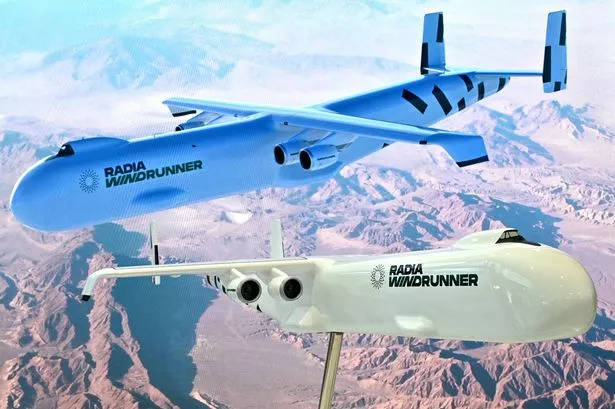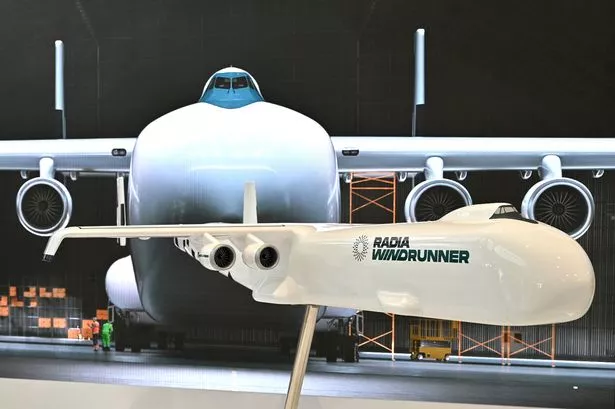The plane, dubbed WindRunner, would be the largest aircraft ever built and would be able to carry 12 times more than a Boeing 747. The 356ft long aircraft would be capable of carrying 12 times the weight of a Boeing 747
The world’s biggest ever plane dubbed ‘Skytanic’ will take-off in five years or less.
Radia, an energy company, is embarking on an ambitious aeronautical venture to develop a gargantuan aircraft named WindRunner. This massive plane, stretching 108m in length, would dwarf a Boeing 747 by carrying twelve times its load, while being 38m longer.
Rocket scientist Mark Lundstrom plays a pivotal role in crafting the design of this grand aircraft intended for a unique purpose: transporting colossal wind turbine blades to far-flung locations. Such blades rank among the world’s lengthiest objects, potentially restricting the cargo jet to haul just one at a time.
Radia aims to overcome major logistical hurdles associated with moving these bulky offshore blades, currently a complex task due to their sheer size. This endeavour could pave the way for an increase in wind farms, which Radia, established in 2016, strongly supports. Some of these mammoth blades tip the scales at around 26,000kg.
READ MORE: World’s longest flight lasts nearly 19 hours and has no economy cabin
In the coming years, wind turbine blades are expected to grow from 70 metres to 100 metres long, to catch more wind while also rotating in a slower, less disruptive fashion. Already, some companies have had to build special roads to transport blades at their current length, as they’ve proven so difficult to transport through tunnels and under bridges.
Radia has seen an opportunity to overcome the logistical opportunities by taking turbine blades to the air. For the past decade it has been working on the WindRunner, a huge plane with a cargo volume a dozen times bigger than a Boeing 747.
The company plans to get the plane up in the air before the end of the decade, New York Times reports. When it does, it will be the biggest plane ever to fly – dwarfing the Ukranian jet Mriya, which was destroyed at the onset of the Russian invasion in 2022.
Addressing the transportation issues tied to wind turbine blades, Paul Hanna, Radia’s vice-president of marketing, detailed some painstaking logistics to a publication: “It takes a year and a half to plan a move of these things down a highway. You’ve got road bridges to get underneath, traffic signs that need to come down, homes that are near the off-ramp that may have to be moved.”
Lundstrom has stated that the “only viable solution” for transporting large wind turbine blades was to create an enormous aircraft, hence the birth of the WindRunner. Despite the mammoth dimensions of a 24m height and 79m long wingspan, the craft can only carry a single 105m blade or up to three 80m blades in one go.
With aspirations for Radia to kick-off aerial blade transport by 2030, Hanna expressed his ambitious goal to Aerospace: “We have the opportunity to take a dramatic and lasting amount of CO2 out of the atmosphere, and we’re giving the aerospace industry the opportunity to participate in reducing the cost of energy by as much as 30%.”
Addressing the World Economic Forum, Lundstrom highlighted the driving force behind their project: “The necessity to fight climate change is something that’s a big motivating factor.
“It’s very unique to be able to have an aerospace solution to climate change, as opposed to contributing to the problem. And so for an aerospace engineer or for an aerospace company to be able to contribute their skills to fighting climate change, instead of just optimizing passenger seat miles or making a defence product, this is a unique opportunity for the aerospace industry to both get exposure into the energy world, and also be able to take many percentage points of CO2 out of the world.”

